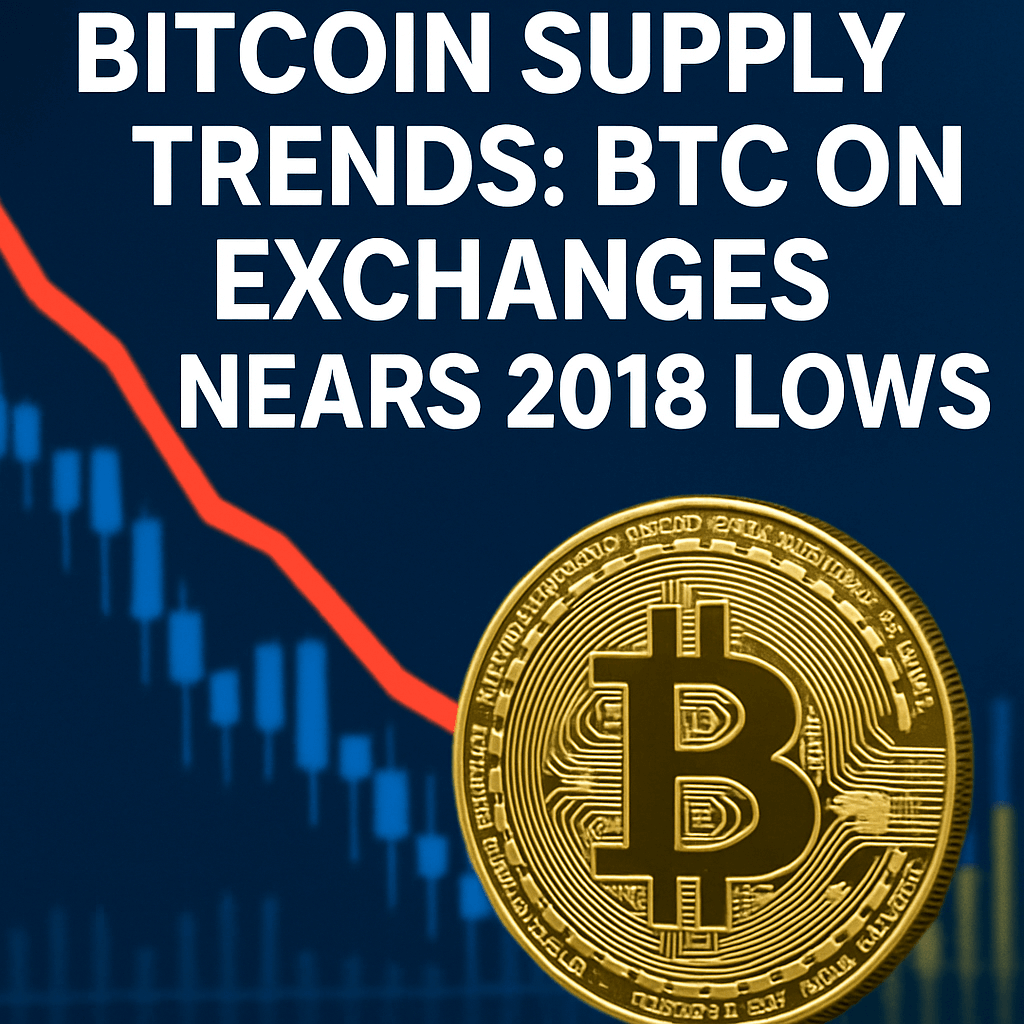Bitcoin Supply Trends: BTC on Exchanges Nears 2018 Lows


Recent trends indicate that the proportion of Bitcoin held on exchanges is dwindling, reaching levels unseen since 2018. This phenomenon could signal an impending supply shock, as institutional demand and an increasing inclination to hold Bitcoin—rather than trade it—drive these changes.
The Current Landscape of Bitcoin on Exchanges
As of October 2023, approximately 12% of the total Bitcoin supply is available on cryptocurrency exchanges. This metric is significant when compared to figures from previous years, including a peak of about 30% in 2018. Lower supply on exchanges suggests that Bitcoin holders are migrating towards long-term holding strategies, preferring to store their assets in private wallets rather than keeping them on platforms susceptible to hacks and volatility.
Drivers of Reduced Exchange Supply
- Institutional Investment: The increasing participation of institutional players has become a critical factor. Hedge funds, asset managers, and corporations are accumulating Bitcoin for treasury reserves, further reducing the amount available for trading.
- Market Sentiment: The market sentiment is shifting towards a more bullish outlook, driven by the potential of Bitcoin being viewed as a hedge against inflation and currency devaluation, particularly in light of current global economic conditions.
- Technological Developments: Layer-2 solutions, such as the Lightning Network, aim to enhance Bitcoin’s scalability, making it more usable for everyday transactions without the need to move large volumes onto exchanges.
Implications of a Supply Shock
A supply shock occurs when the supply of a commodity decreases suddenly while demand remains consistent or increases. In the case of Bitcoin, if the circulating supply becomes constrained while institutional and retail interest continues to grow, prices may experience upward pressure.
Experts suggest that historical precedents indicate significant price increases during instances of similar supply shocks. For example, the 2020 halving event, which reduced Bitcoin rewards for miners, led to a notable market rally over the subsequent months.
Technical Analysis and Predictions
Looking at historical price charts, analysts point out that a shift in available Bitcoin on exchanges can impact trading volumes, liquidity, and overall market patterns. With fewer bitcoins available for traders, volatility may increase as price discovery becomes more sensitive to the buying and selling activities of a smaller number of participants.
Technical analysts suggest monitoring key resistance levels, with many eyeing the $50,000 mark as a potential breakout threshold. A sustained move above this level could indicate a strong bullish trend, further amplified by the reduced supply on exchanges.
Conclusion: A Market Experiment
As Bitcoin moves towards a new cycle, where fewer coins are held on exchanges, the market appears to be entering a formative experiment in supply and demand dynamics. Increased institutional buy-in and the evolving narrative of Bitcoin as a store of value versus a transactional currency will likely influence future price trajectories. Investors and analysts alike will need to keep a close watch on these shifts, as they may herald another chapter in Bitcoin’s storied journey.
“The decreasing supply of Bitcoin on exchanges is a strong indicator that we may be on the brink of a significant price shift. Market participants should remain alert to these developments,” provided one industry analyst in a recent interview.